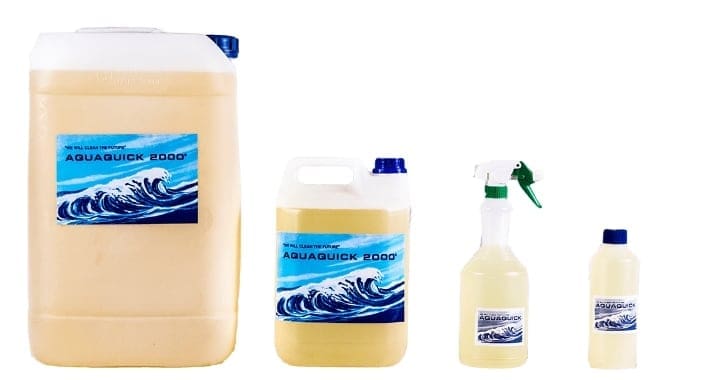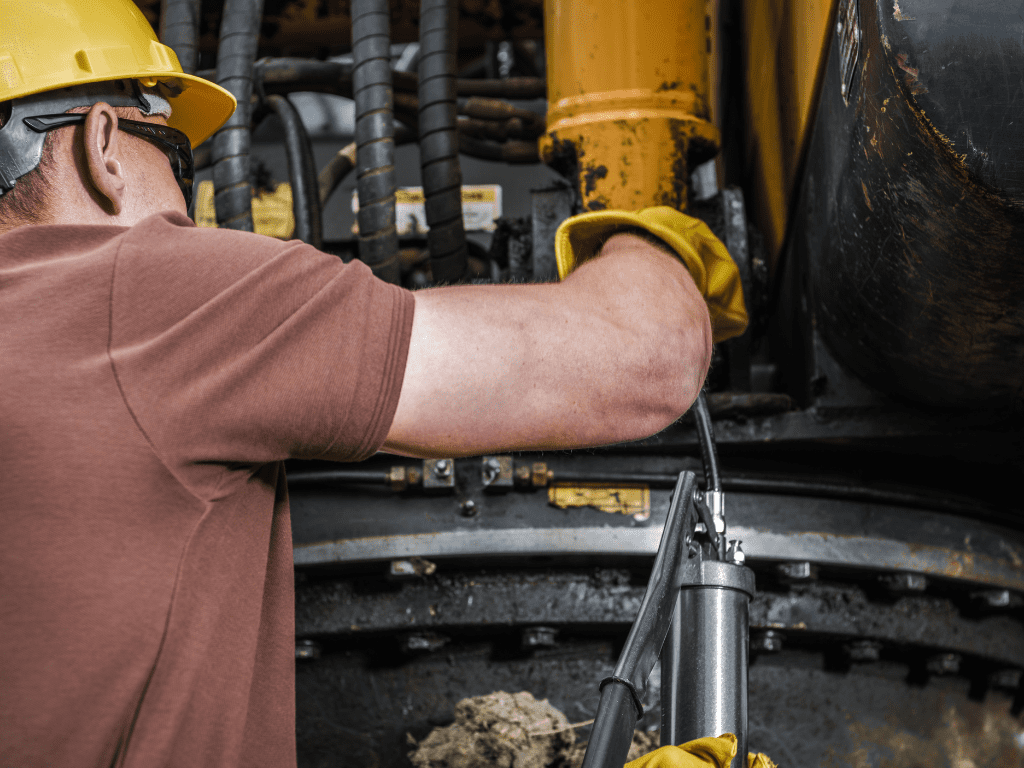I. Introduction
Heavy grease accumulation is a common challenge in various industries, from commercial kitchens to industrial facilities. Efficient grease cleaning is crucial for maintaining cleanliness, preventing safety hazards, and prolonging the lifespan of equipment and surfaces. In this article, we will delve into the realm of heavy grease cleaners, exploring effective methods and highlighting why AquaQuick emerges as a standout solution in this domain.
II. Understanding Heavy Grease and Its Challenges
Definition of Heavy Grease:
Heavy grease refers to thick, viscous residues comprised of fats, oils, and other organic compounds. It often accumulates on surfaces such as kitchen appliances, machinery, and engine parts, posing cleaning challenges due to its tenacious nature.
Challenges Associated with Cleaning Heavy Grease:
Heavy grease presents several challenges during the cleaning process, including:
- Adherence: Heavy grease tends to adhere stubbornly to surfaces, making it difficult to remove using conventional cleaning methods.
- Persistence: Even after initial cleaning attempts, heavy grease may leave behind residue that can lead to recontamination and buildup.
- Environmental Impact: Traditional cleaning agents used for heavy grease removal may contain harsh chemicals that pose risks to both human health and the environment.
Impact of Heavy Grease on Surfaces and Environments:
The presence of heavy grease can have detrimental effects on surfaces and environments, including:
- Surface Degradation: Prolonged exposure to heavy grease can degrade surfaces, leading to corrosion, discoloration, and structural damage.
- Fire Hazard: Accumulated grease residues on cooking appliances and machinery increase the risk of fire hazards, posing a threat to both property and personnel.
- Environmental Contamination: Runoff of grease-laden water into the environment can pollute water bodies, harm aquatic life, and disrupt ecosystems.

III. Traditional Methods of Grease Cleaning
Overview of Traditional Grease Cleaning Methods:
Traditional methods for cleaning heavy grease include:
- Manual Scrubbing: Scrubbing surfaces with soap, water, and abrasive tools to physically dislodge grease deposits.
- Chemical Cleaners: Using solvent-based degreasers and harsh chemicals to dissolve and remove heavy grease.
- Steam Cleaning: Applying high-pressure steam to surfaces to loosen and disperse grease buildup.
Limitations and Drawbacks of Traditional Approaches:
While traditional methods may offer some degree of effectiveness, they are often accompanied by significant limitations, including:
- Incomplete Removal: Traditional cleaners may struggle to fully penetrate and remove heavy grease, leaving behind residue that can contribute to recontamination.
- Environmental Concerns: Many traditional degreasers contain toxic chemicals that pose risks to human health and the environment, necessitating careful handling and disposal.
- Labor Intensive: Manual scrubbing and steam cleaning methods require considerable time and effort, particularly for large-scale cleaning tasks.
Need for Innovative Solutions like AquaQuick:
In light of the challenges posed by heavy grease and the limitations of traditional cleaning methods, there is a growing need for innovative solutions that offer superior performance, safety, and environmental sustainability. AquaQuick emerges as a leading contender in this regard, offering a revolutionary approach to heavy grease cleaning that prioritizes efficacy, eco-friendliness, and ease of use.
IV. What Makes AquaQuick a Superior Grease Cleaner
Introduction to AquaQuick and Its Unique Features: AquaQuick stands out as a revolutionary grease cleaning solution designed to address the challenges posed by heavy grease effectively. Unlike traditional cleaners, AquaQuick harnesses the power of advanced emulsification technology to penetrate, dissolve, and lift stubborn grease residues from surfaces with unparalleled efficiency.

Key Benefits of AquaQuick Over Traditional Grease Cleaners:
- Rapid Action: AquaQuick’s fast-acting formula delivers swift results, minimizing downtime and maximizing productivity.
- Eco-Friendly Formulation: AquaQuick boasts an environmentally conscious formulation, free from harsh chemicals and toxins, making it safe for both users and the planet.
- Versatile Application: AquaQuick is suitable for a wide range of surfaces and environments, including commercial kitchens, industrial facilities, marine vessels, and automotive settings.
- Reduced Labor Intensity: With AquaQuick’s superior cleaning power, labor-intensive scrubbing and manual cleaning efforts are significantly reduced, saving time and resources.
- Long-lasting Results: AquaQuick’s emulsification technology ensures thorough grease removal, preventing residue buildup and prolonging the cleanliness of treated surfaces.
Testimonials or Case Studies Showcasing AquaQuick’s Effectiveness: Numerous testimonials and case studies attest to AquaQuick’s remarkable efficacy in real-world scenarios. From commercial kitchens to industrial plants, users consistently report outstanding results and express satisfaction with AquaQuick’s performance in tackling even the toughest grease challenges.
V. How AquaQuick Works as a Grease Cleaner
Detailed Explanation of AquaQuick’s Cleaning Mechanism:
AquaQuick employs a unique cleaning mechanism based on emulsification, which allows it to penetrate deep into grease layers, breaking them down into smaller, more manageable particles. This process effectively suspends the grease in the solution, allowing it to be easily rinsed away without leaving behind any residue.
Breakdown of AquaQuick’s Ability to Emulsify and Lift Heavy Grease:
AquaQuick’s emulsification action begins upon contact with the grease, rapidly dispersing and dissolving it into the solution. The emulsified grease is then lifted from the surface, leaving it clean, residue-free, and restored to its original condition.
Comparison with Other Degreasers in Terms of Efficacy:
In comparative studies and user testimonials, AquaQuick consistently outperforms traditional degreasers in terms of efficacy, speed, and ease of use. Its advanced formulation and emulsification technology give it a clear edge over competing products, delivering superior results with minimal effort.
VI. Application Areas for AquaQuick
Commercial Kitchens:
AquaQuick excels in commercial kitchen environments, where grease buildup on surfaces and equipment poses sanitation and safety concerns. From countertops to cooking appliances, AquaQuick effectively removes grease residues, ensuring a hygienic food preparation environment.
Industrial Settings:
In industrial settings, AquaQuick proves invaluable for cleaning heavy machinery, engine parts, and manufacturing equipment. Its powerful emulsification action tackles tough grease deposits, helping to maintain optimal operational efficiency and prolong equipment lifespan.
Marine Environments:
On ships and vessels, where grease accumulation is inevitable due to engine operations and onboard cooking facilities, AquaQuick offers a reliable solution for maintaining cleanliness and preventing corrosion. Its eco-friendly formulation is safe for use in marine ecosystems.
Automotive Sector:
In the automotive sector, AquaQuick is trusted for degreasing engines, automotive parts, and workshop surfaces. Its ability to dissolve grease effectively without damaging sensitive components makes it a preferred choice among mechanics and car enthusiasts.

VII. Environmental Impact of AquaQuick
Discussion on AquaQuick’s Eco-Friendly Formulation: AquaQuick’s commitment to environmental sustainability is reflected in its eco-friendly formulation, which is free from harsh chemicals and toxins commonly found in traditional degreasers. By prioritizing biodegradability and safety, AquaQuick minimizes its ecological footprint while delivering superior cleaning performance.
Comparison with Traditional Degreasers in Terms of Environmental Impact: Unlike conventional degreasers, which often contain hazardous ingredients harmful to the environment, AquaQuick offers a greener alternative that meets stringent environmental standards. Its biodegradable formula breaks down harmlessly, reducing pollution and preserving natural ecosystems.
Compliance with Regulations and Standards for Environmental Safety: AquaQuick complies with regulations and standards governing environmental safety and workplace health, ensuring that users can trust its effectiveness without compromising on sustainability. By choosing AquaQuick, businesses can uphold their commitment to environmental responsibility while maintaining clean, grease-free environments.
VIII. User Guide: How to Use AquaQuick Effectively
A. Preparation Steps
Before using AquaQuick, it’s essential to prepare the cleaning area and ensure safety measures are in place:
- Adequate Ventilation: Ensure proper ventilation in the cleaning area to prevent the accumulation of fumes.
- Personal Protective Equipment (PPE): Wear appropriate PPE, including gloves and goggles, to protect against potential splashes or contact with the cleaning solution.
- Surface Preparation: Remove any loose debris or surface contaminants before applying AquaQuick for optimal cleaning results.
B. Application Methods
AquaQuick offers versatile application methods to suit various cleaning needs:
1. Spray Application:
- Fill a spray bottle or pressure sprayer with AquaQuick solution.
- Adjust the nozzle for desired coverage and pressure.
- Spray AquaQuick directly onto the grease-affected surface, ensuring even distribution.
2. Immersion Method:
- Prepare a container or tank with AquaQuick solution.
- Submerge the greasy parts or items into the solution, ensuring they are fully immersed.
- Allow sufficient soaking time for AquaQuick to penetrate and dissolve the grease thoroughly.
3. Brush Application:
- Apply AquaQuick directly onto the surface using a brush or scrubbing pad.
- Scrub the area thoroughly to agitate and lift the grease.
- Rinse or wipe away the dissolved grease and cleaner residue after application.

C. Dwell Time and Agitation
To optimize AquaQuick’s cleaning effectiveness:
- Dwell Time: Allow AquaQuick to dwell on the surface for a sufficient duration to penetrate and emulsify the grease effectively.
- Agitation: Agitate the solution with a brush, sponge, or cloth to enhance the cleaning action, particularly on stubborn grease deposits.
D. Rinse or Wipe Off
After the cleaning process:
- Rinse the cleaned surface with water to remove residual cleaner and grease.
- Use a clean cloth or sponge to wipe away excess moisture and residue, ensuring a clean and dry surface.
E. Safety Precautions
Ensure safety during and after AquaQuick application:
- Avoid Contact: Prevent contact with eyes, skin, and mucous membranes by wearing appropriate PPE.
- Fire Safety: Keep AquaQuick away from open flames or heat sources to avoid the risk of fire hazards.
- Disposal: Dispose of used AquaQuick solution according to local regulations and guidelines.
F. Storage and Handling
Proper storage and handling of AquaQuick are essential for maintaining its effectiveness:
- Storage: Store AquaQuick in a cool, dry place away from direct sunlight to prevent degradation.
- Seal Tight: Keep containers tightly sealed when not in use to prevent evaporation and contamination.
- Shelf Life: Follow the manufacturer’s recommendations for shelf life and storage conditions to ensure product efficacy.
G. Troubleshooting Tips
For challenging cleaning situations:
- Increase Dwell Time: For stubborn grease deposits, increase the dwell time of AquaQuick on the surface to allow for better penetration and emulsification.
- Adjust Concentration: Use higher concentrations of AquaQuick for heavy-duty cleaning tasks to enhance its effectiveness.
- Experiment: Try different application methods and tools to find the most efficient approach for specific cleaning needs.
H. Environmental Considerations
Minimize environmental impact during and after AquaQuick usage:
- Responsible Disposal: Dispose of AquaQuick solution responsibly to minimize environmental contamination.
- Eco-Friendly Alternatives: Choose biodegradable or eco-friendly alternatives whenever possible to reduce ecological footprint.
- Regulatory Compliance: Adhere to regulations and standards for wastewater treatment and disposal in accordance with local environmental guidelines.

I. Regular Maintenance
Incorporate AquaQuick into regular cleaning routines to prevent grease buildup:
- Scheduled Cleaning: Implement routine cleaning schedules using AquaQuick to prevent grease accumulation on surfaces.
- Inspection: Conduct periodic inspections to identify and address any grease-prone areas promptly.
- Proactive Approach: Take a proactive approach to maintenance to ensure surfaces remain clean and grease-free for extended periods.
IX. Conclusion
In conclusion, effective grease cleaning is essential for maintaining cleanliness, safety, and operational efficiency in various settings. AquaQuick emerges as a superior solution for tackling heavy grease challenges, offering unparalleled cleaning power, safety, and environmental sustainability. We encourage readers to experience the difference with AquaQuick and discover the benefits of a cleaner, healthier environment.














